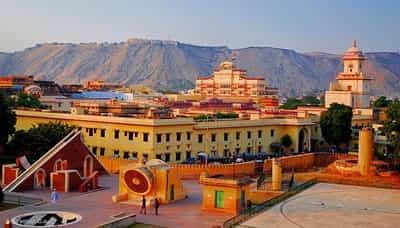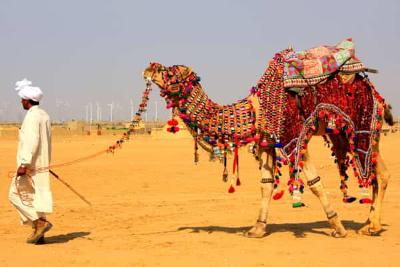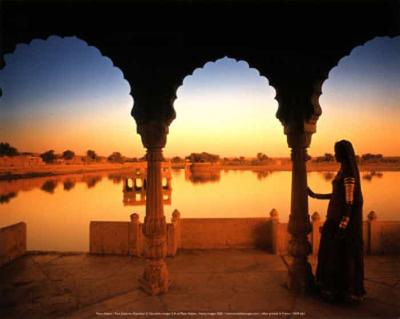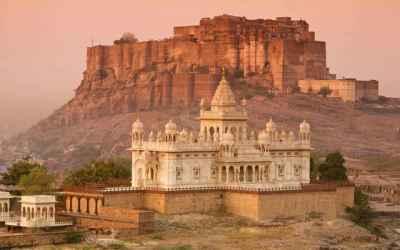Exploring Tribal Art and Craft of Rajasthan
Rajasthan, known as the "Land of Kings," is not only famous for its majestic forts and palaces but also for its rich cultural heritage. The state is home to various tribes with unique art and craft forms that have been passed down through generations. Exploring the tribal art and craft of Rajasthan is like delving into a treasure trove of traditional skills and techniques.
The Vibrant World of Rajasthani Tribes
Rajasthan is home to many tribes, each with their distinct traditions and art forms. Some of the prominent tribes include the Bhils, Garasias, Meenas, Sahariyas, and Banjaras, among others. These tribes reside in remote villages and have managed to preserve their age-old customs and crafts.
Bhils
The Bhil tribe is one of the largest and most widely distributed tribes in Rajasthan. They are known for their intricate beadwork, wood carving, and pottery. The vibrant colors and geometric patterns used in their art reflect their close connection to nature and the surrounding landscape.
Garasias
The Garasia tribe, mainly found in the Sirohi district, are renowned for their exquisite embroidery work. Their embroidery often features mirror work, intricate threadwork, and vibrant motifs inspired by nature. Their craftsmanship is evident in their stunning textiles, including sarees, dupattas, and garments.
Meenas
The Meena tribe, predominantly settled in the southern part of Rajasthan, are known for their expertise in traditional jewelry making. They are skilled in intricate silver and gold work, encrusted with precious and semi-precious stones. The Meena jewelry, with its unique designs and techniques, holds great cultural and artistic significance.
Sahariyas
The Sahariya tribe, residing in the southeastern parts of Rajasthan, specialize in pottery and basket weaving. They create beautiful terracotta pots, clay utensils, and intricate baskets using traditional methods. The Sahariya pottery exhibits a rustic charm and the baskets are skillfully woven with natural fibers.
Banjaras
The Banjara tribe, often referred to as the "gypsies of Rajasthan," are known for their exquisite embroidery and mirror work. Their artistry is showcased in their colorful textiles, including clothes, bags, and wall hangings. The intricate mirror work reflects their nomadic lifestyle and love for vibrant aesthetics.
Exploring Tribal Crafts in Rajasthan
When visiting Rajasthan, make sure to explore the various local markets and villages to witness the stunning tribal crafts up close. Here are some popular places to discover these unique art forms:
- Shilpgram, Udaipur: This rural arts and crafts complex hosts an annual fair where artisans from different tribes gather to showcase their craftsmanship.
- Sawai Madhopur: This town is famous for its wooden toys and lacquer work, both of which are predominantly created by the Sahariya tribe.
- Ajmer: Visit Ajmer for the exquisite silver jewelry crafted by the Meena tribe. The Johari Bazaar is a must-visit for jewelry enthusiasts.
- Pushkar: Apart from the famous Pushkar Camel Fair, the town is also known for its colorful textiles and mirror work created by the Banjara tribe.
- Pottery Village, Bikaner: Explore the pottery village near Bikaner to witness the artistic skills of the Sahariya tribe and their beautiful clay creations.
Preserving the Legacy
The art and craft forms of Rajasthan's tribal communities are not only a source of livelihood but also an integral part of their cultural identity. However, with changing times, these traditions are facing various challenges. It is crucial to support and promote these artisans to ensure the survival of these age-old crafts.
Many organizations and NGOs are working towards the upliftment of the tribal artisans by providing them with a platform to showcase their work, facilitating skill development workshops, and creating sustainable market opportunities. By purchasing their crafts, we can contribute to their livelihood and help preserve their cultural legacy.
In Conclusion
Exploring the tribal art and craft of Rajasthan is like stepping into a world steeped in tradition and creativity. The intricate beadwork, embroidery, pottery, and jewelry of the Bhils, Garasias, Meenas, Sahariyas, and Banjaras are a testament to the skill and talent of these tribal communities. So, the next time you visit Rajasthan, make sure to dive into the vibrant world of tribal art and craft and support the rich cultural heritage of the state.
Share this post with your friends and let them discover the hidden gems of Rajasthan's tribal art and craft!
Disclaimer : The information provided in this blog is for general informational purposes only. While we strive to keep the content accurate and updated, TravelSetu assumes no liability for errors or omissions. If you believe any part of this blog infringes your rights or causes concern, please notify us immediately at info[at]travelsetu[dot]com so that appropriate action can be taken.







